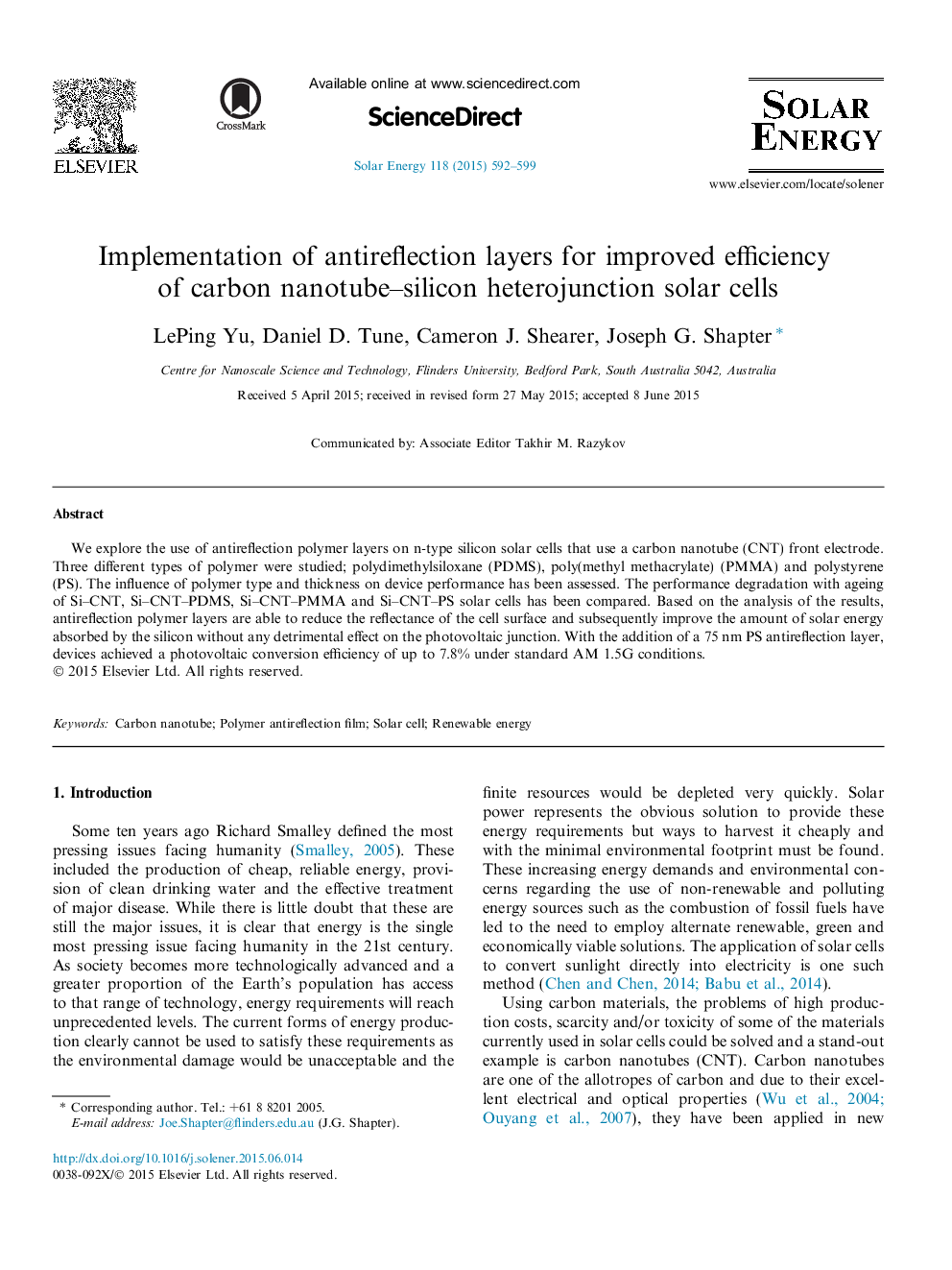| Article ID | Journal | Published Year | Pages | File Type |
|---|---|---|---|---|
| 7937811 | Solar Energy | 2015 | 8 Pages |
Abstract
We explore the use of antireflection polymer layers on n-type silicon solar cells that use a carbon nanotube (CNT) front electrode. Three different types of polymer were studied; polydimethylsiloxane (PDMS), poly(methyl methacrylate) (PMMA) and polystyrene (PS). The influence of polymer type and thickness on device performance has been assessed. The performance degradation with ageing of Si-CNT, Si-CNT-PDMS, Si-CNT-PMMA and Si-CNT-PS solar cells has been compared. Based on the analysis of the results, antireflection polymer layers are able to reduce the reflectance of the cell surface and subsequently improve the amount of solar energy absorbed by the silicon without any detrimental effect on the photovoltaic junction. With the addition of a 75Â nm PS antireflection layer, devices achieved a photovoltaic conversion efficiency of up to 7.8% under standard AM 1.5G conditions.
Related Topics
Physical Sciences and Engineering
Energy
Renewable Energy, Sustainability and the Environment
Authors
LePing Yu, Daniel D. Tune, Cameron J. Shearer, Joseph G. Shapter,
